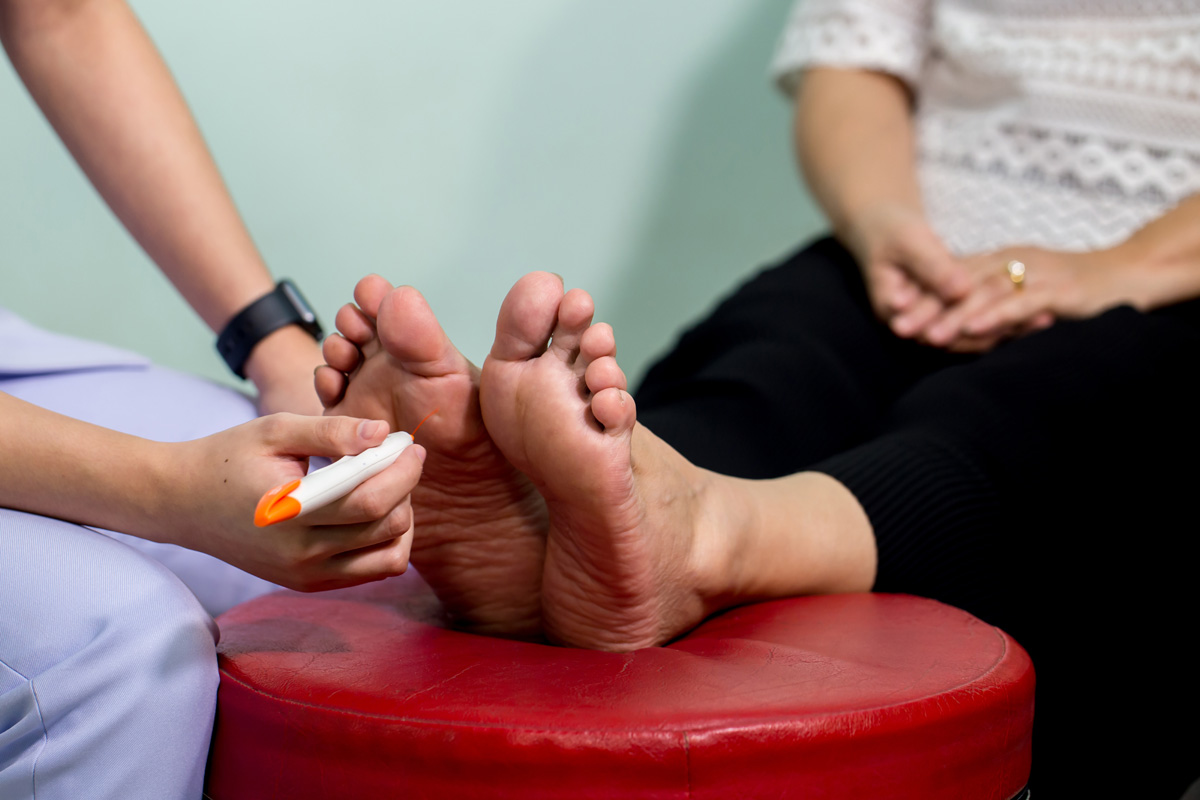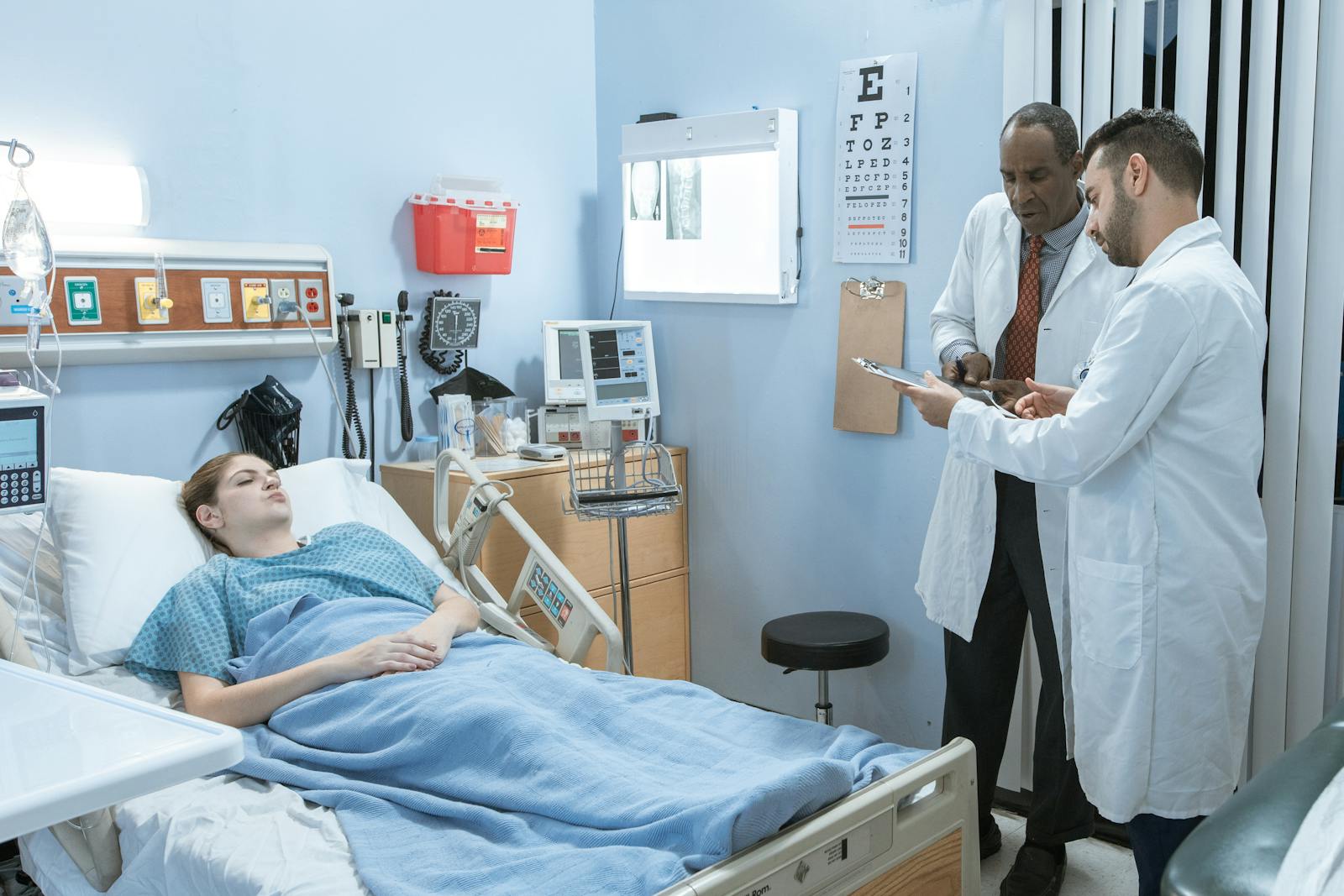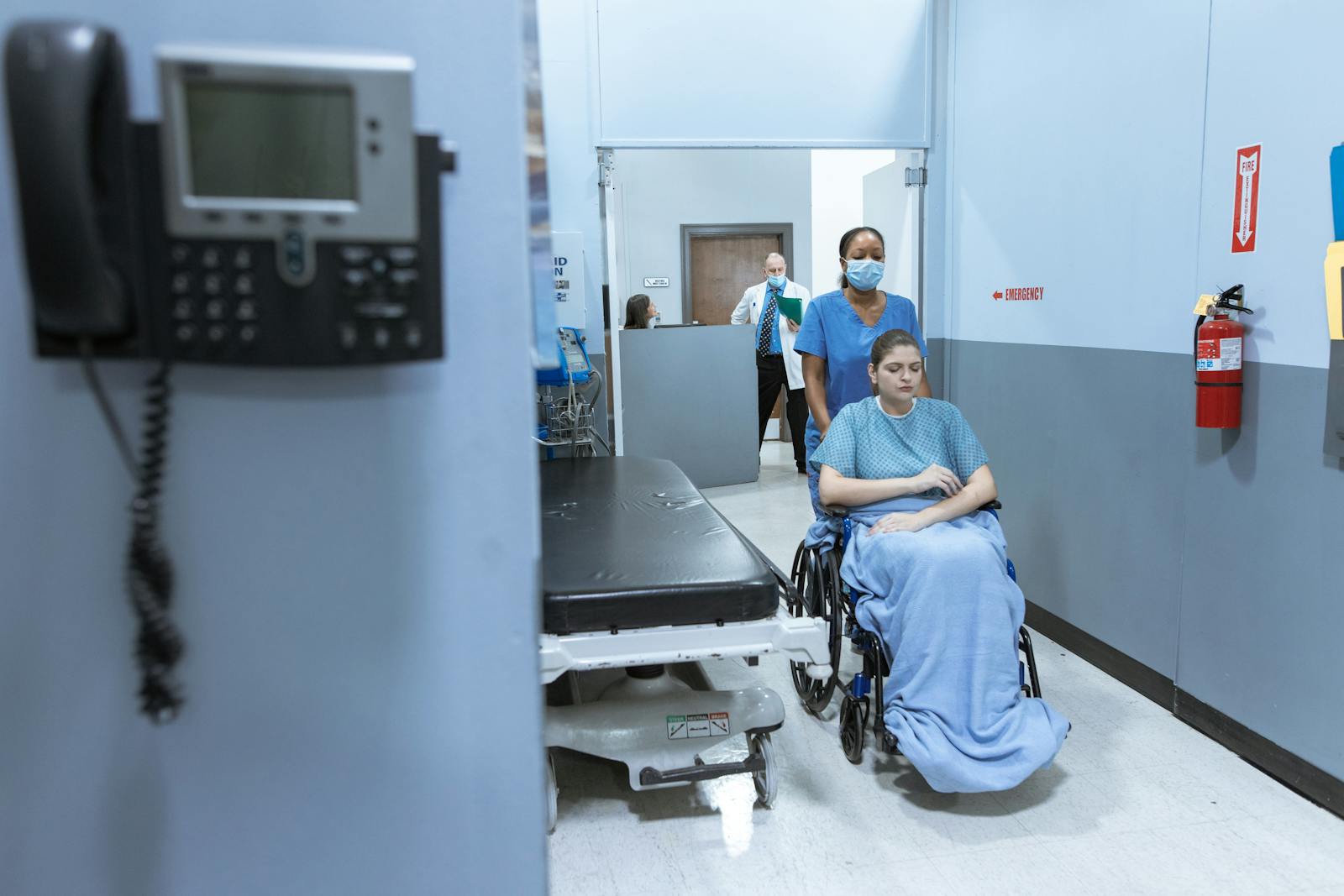Coccygectomy, a surgical procedure involving the removal of the coccyx or tailbone, is often considered a last resort treatment for persistent coccydynia or tailbone pain. Despite its potential for relief, this procedure is not without risks; chief among them is the possibility of nerve damage. From bowel and bladder complications to sexual dysfunction and sensory loss in the lower body, the implications of nerve damage post-coccygectomy are multifaceted and significant. As we explore these risks, we will also discuss potential strategies for risk mitigation and post-surgery rehabilitation.
Understanding Coccygectomy
To fully comprehend the potential risks involved, it’s imperative that we first understand what coccygectomy entails. Coccygectomy refers to the surgical removal of the coccyx or tailbone, a small, triangular bone at the base of the spinal column. This bone consists of three to five fused segments and plays a crucial role in supporting the body while sitting.
Understanding the coccyx anatomy is key to appreciating the complexity of the procedure. The coccyx is positioned near several vital structures such as the rectum and the sacral plexus of nerves, which control lower extremity function. During coccygectomy, the risk of inadvertently damaging these structures is high, leading to potential complications.
While coccygectomy is considered a treatment option for persistent coccydynia (tailbone pain), it’s important to consider surgery alternatives before proceeding. Non-surgical treatments include use of seat cushions to reduce pressure on the tailbone, physical therapy, and medication for pain management. Injections of corticosteroids or local anaesthetics into the coccyx can also provide relief.
General Nerve Damage Overview
Given the proximity of the coccyx to the sacral plexus of nerves, it’s essential to appreciate the potential for nerve damage following a coccygectomy. This damage could lead to lasting discomfort or functional impairment, depending on the extent and location of the damage.
Nerve damage symptoms might include:
- Persistent pain or numbness: This could manifest as a constant, unrelenting discomfort or a complete loss of sensation in the affected area.
- Muscle weakness or paralysis: Damage to nerves can disrupt signals to muscles, leading to weakness or even paralysis in extreme cases.
- Sensitivity: Some patients might experience heightened sensitivity, a symptom often described as a “pins and needles” sensation.
- Loss of coordination: Nerve damage could affect the ability to perform coordinated movements, especially if the damage is extensive.
Prevention measures are critical to mitigate these potential risks. These might include meticulous surgical technique, careful patient positioning during the procedure, and the use of nerve monitoring technologies. In addition, postoperative care, including physical therapy and regular follow-ups, can help detect and address any possible complications early on. It is crucial to understand these risks and prevention measures to ensure the best possible outcome after a coccygectomy.
Bowel and Bladder Issues
Post-coccygectomy patients may experience complications pertaining to bowel and bladder functions, potentially due to nerve damage. These issues, including bowel dysfunction and challenges with bladder control, often necessitate careful post-operative management. Incontinence is a common consequence, requiring a comprehensive understanding of the condition and the development of effective strategies to mitigate its impact on the patient’s quality of life.
Understanding Bowel Dysfunction
In the aftermath of a coccygectomy, patients may experience a significant disruption in the normal functioning of their bowel and bladder systems, a condition known as bowel dysfunction. This can manifest in various ways, primarily as digestive complications and rectal prolapse.
- Digestive Complications: Postoperative bowel dysfunction can lead to issues like constipation, diarrhea, or abdominal pain. These complications can significantly impact the patient’s quality of life.
- Rectal Prolapse: This occurs when the rectum’s lining slips outside the anus, often a result of weakened pelvic muscles post-surgery.
- Incontinence: Patients may struggle with controlling bowel movements, leading to fecal incontinence.
- Bowel Obstruction: Scar tissue from surgery may cause blockages, leading to severe abdominal pain and bloating.
Understanding these potential issues can help in formulating effective management strategies post-coccygectomy.
Bladder Control Challenges
Apart from bowel dysfunction, coccygectomy patients may also grapple with bladder control challenges, a serious concern that can significantly affect daily life. Urinary urgency often presents as an immediate and uncontrollable need to urinate. This can cause distress, embarrassment, and limit social interactions. Furthermore, the inability to fully control the bladder increases infection risks. This is because residual urine in the bladder can provide a suitable environment for bacteria to proliferate, leading to urinary tract infections (UTIs). The nerve damage incurred during coccygectomy can disrupt the normal signaling pathway between the bladder and the brain, causing these complications. Therefore, comprehensive postoperative care should encompass strategies to manage and mitigate these bladder control challenges.
Post-Operative Incontinence Management
Addressing the patient’s post-operative incontinence, both bowel and bladder, is a critical aspect of the comprehensive care strategy implemented after a coccygectomy. The incontinence stigma often experienced by patients can lead to feelings of embarrassment, thereby hindering their recovery. Hence, it is crucial to provide supportive care to manage these issues effectively.
- Education: Inform patients about their condition to alleviate fears and misconceptions.
- Training: Teach pelvic floor exercises to improve muscle control and prevent leakage.
- Medication: Prescribe appropriate drugs to manage symptoms and improve bladder control.
- Emotional support: Address the psychological impact of incontinence stigma by offering counselling and reassurance.
Through these measures, post-operative incontinence can be managed effectively, improving the patient’s quality of life.
Sexual Dysfunction Risk
Potential nerve damage following a coccygectomy poses a significant risk of sexual dysfunction, a factor that merits thorough analysis. The coccyx, or tailbone, is in close proximity to various nerves that play crucial roles in sexual function. Damage to these nerves during a coccygectomy can lead to a range of sexual complications.
Libido changes are a common consequence of nerve damage after coccygectomy. Both men and women may experience a decline in sexual desire, often due to pain, discomfort or psychological distress associated with the surgery. This, in turn, can affect their ability to maintain intimate relationships, leading to decreased quality of life.
The fertility implications of nerve damage following coccygectomy are also significant. In men, damage to the pudendal nerve can lead to erectile dysfunction, potentially affecting their ability to conceive. Similarly, women may experience changes in vaginal sensation and lubrication, which can make intercourse painful and potentially impact conception.

Lower Body Sensation Loss
In addition to the aforementioned sexual dysfunction, another significant consequence of coccygectomy is the risk of sensation loss in the lower body due to potential nerve damage. This loss of sensation, often referred to as neuropathy, can have a profound impact on a patient’s quality of life, ranging from mild discomfort to severe disability.
- Sensation Mapping: The process of sensation mapping is crucial in diagnosing and assessing the extent of nerve damage post-surgery. By using a series of tests and stimuli, physicians can create a detailed map of the patient’s sensory functions, identifying any areas of numbness, tingling or pain.
- Neuropathy Diagnosis: A formal diagnosis of neuropathy is given when there is a consistent pattern of sensation loss, corroborated by clinical examination and patient’s symptom description.
- Impact on Mobility: This sensation loss can affect balance and coordination, increasing the risk of falls and injuries.
- Treatment and Management: While nerve damage is often irreversible, there are strategies for managing the symptoms, such as physical therapy and medication to control pain.
Understanding these aspects is vital for patients to make informed decisions about the potential risks and benefits of undergoing coccygectomy.
Chronic Pain Development
Chronic pain development post coccygectomy presents a considerable challenge, warranting an in-depth exploration of its understanding, management techniques, and long-term health implications. It is pivotal to comprehend the genesis and progression of chronic pain in order to devise effective management strategies. Moreover, the long-term health implications of such chronic discomfort serve to underscore the importance of this discussion.
Understanding Chronic Pain
Examining the phenomenon of chronic pain reveals a complex interplay of physiological factors, notably including potential nerve damage following a coccygectomy. Chronic pain, often a consequence of this procedure, can be reframed in terms of Pain Perception and its impact on daily life.
The complexity of chronic pain can be summarized into four key points:
- Chronic pain is not merely a symptom, but a disease in itself.
- It often results from changes in the central nervous system that amplify pain signals.
- These alterations can lead to a heightened Pain Perception, making patients more sensitive to pain.
- Chronic pain is a significant risk factor for Opioid Dependence, as patients may resort to these drugs for relief.
Pain Management Techniques
Frequently, the development of chronic pain post-coccygectomy necessitates the implementation of strategic pain management techniques to mitigate the discomfort and enhance the patient’s quality of life. These techniques involve a multi-faceted approach addressing both physical and psychological aspects of pain. Utilizing alternative therapies, such as acupuncture, biofeedback, and yoga, can significantly reduce pain intensity and improve functionality. These therapies act by modulating pain perception, altering the neural pathways involved in the pain response. Additionally, cognitive behavioral therapy can help patients develop coping strategies to manage their pain effectively. Systematic pain assessment and reassessment are essential to monitor the efficacy of these interventions and adjust treatment plans accordingly. This comprehensive approach to pain management post-coccygectomy is crucial for optimal patient outcomes.
Long-term Health Implications
While the pain management strategies described above are crucial in post-coccygectomy care, it is equally important to consider the long-term health implications of the procedure, particularly the development of chronic pain.
- Mental Health Implications: Chronic pain can lead to depression, anxiety, and other mental health disorders, affecting patients’ quality of life.
- Lifestyle Adaptations: Patients may need to modify their daily activities to manage discomfort, potentially impacting their social and professional lives.
- Pain Management: Long-term use of pain medications may lead to dependence or other health risks.
- Physical Health: Persistent pain can contribute to sleep disturbances, reduced physical activity, and other health complications.
Understanding these factors can aid in the development of comprehensive treatment plans and highlight the importance of a preventative approach to nerve damage following coccygectomy.
Walking and Mobility Challenges
Post-coccygectomy, patients may encounter significant challenges in walking and mobility due to potential nerve damage. This impairment is often manifested through balance difficulties and gait alterations, both of which can considerably impact an individual’s quality of life.
Balance difficulties occur due to the disruption of the sensory nerves around the coccyx during surgery. These nerves are responsible for maintaining equilibrium and stability during movement. Their damage can lead to unsteadiness, frequent falls, and a compromised ability to navigate uneven surfaces or intricate footwork.
Gait alterations post-coccygectomy are another common mobility issue. Affected individuals may develop an abnormal or altered walking pattern due to nerve damage, with symptoms ranging from limping to a stiff-legged gait. This not only hinders mobility but may also lead to secondary musculoskeletal complications such as hip or knee pain, and even spine disorders in severe cases.
Potential for Reoperation
Despite the best surgical interventions, the potential for reoperation exists due to the complex nature of coccygectomy and the associated risk of complications such as nerve damage. Reoperation complications can be numerous and may significantly impact the second surgery prognosis.
The reasons necessitating a second surgery can be broadly classified into four major categories:
- Persistent or recurrent pain: If the initial coccygectomy does not sufficiently alleviate pain or if the pain recurs, a second surgery may be necessary.
- Incomplete resection: The coccyx may not be entirely removed during the first surgery, necessitating a reoperation.
- Postoperative complications: Infections, abscess formation, or wound dehiscence may require surgical intervention.
- Nerve damage or persistent neurological symptoms: If nerve damage occurs during the initial surgery, further operations may be needed to repair the damaged nerves or alleviate symptoms.
Reoperation carries its own set of risks, including increased chance of infection, potential for increased nerve damage, and a longer recovery period. The prognosis of a second surgery tends to be less favorable due to these increased risks and the already compromised state of the patient. As such, the decision to undertake a second surgery should be considered carefully.
Psychological Impact of Nerve Damage
In the realm of coccygectomy complications, nerve damage not only presents physical challenges but also significantly impacts the psychological well-being of the patient. The onset of nerve damage post-surgery can trigger emotional distress due to the sudden and potentially long-lasting changes in bodily function. This emotional distress may manifest as anxiety, depression, or other mental health disorders.
The interplay between physical pain and mental health is complex and individualistic, with research suggesting a circular relationship between the two. Persistent pain, resulting from nerve damage, can exacerbate mental health issues and, conversely, poor mental health may heighten the patient’s perception of pain. This bidirectional relationship creates a cycle that can be difficult to interrupt without targeted intervention.
Moreover, the decreased mobility and independence that may follow nerve damage can lead to feelings of helplessness or hopelessness, further impacting the patient’s mental health. Therefore, it is of paramount importance that healthcare professionals recognize and address these psychological implications in their treatment plan, alongside managing the physical symptoms of nerve damage. This holistic approach can improve patient outcomes, fostering resilience and promoting a higher quality of life post-coccygectomy.
Post-Surgery Rehabilitation Challenges
Navigating the gauntlet of post-surgery rehabilitation presents a distinct set of challenges that can significantly affect a patient’s recovery journey after a coccygectomy. Despite the advancements in therapy and a variety of rehabilitation tools at our disposal, the complexity of the coccyx region and the potential nerve damage complicates this process.
To illustrate, we can consider the following key challenges:
- Pain Management: Post-surgery pain can be intense and prolonged, making it difficult for patients to fully engage in necessary rehabilitation exercises.
- Physical Limitations: The coccyx region plays a crucial role in many movements. Post-surgery, patients often face limitations in mobility and flexibility, hindering their ability to perform daily activities.
- Adherence to Rehabilitation Program: The uncomfortable and often painful exercises can lead to poor adherence to the rehabilitation program, which can significantly slow down recovery.
- Psychological Impact: Chronic pain and limited mobility can lead to frustration and depression, further complicating the rehabilitation process.
Addressing these challenges requires a holistic approach that not only focuses on physical healing but also considers the psychological aspects of recovery. This will ensure a more successful rehabilitation journey for patients undergoing coccygectomy.
Risk Mitigation Strategies
Given the complexities associated with post-surgery rehabilitation, it becomes imperative to explore comprehensive risk mitigation strategies that could potentially alleviate nerve damage risks after coccygectomy. Surgical alternatives and pre-operative counselling emerge as two significant factors in this context.
Surgical alternatives should be a key component of the risk mitigation strategy. There are less invasive procedures that can be considered, such as partial coccygectomy, which can reduce the likelihood of nerve damage. Another alternative could be non-surgical treatments like physiotherapy or pain management therapies, which can also contribute to reducing the risk.
Pre-operative counselling, on the other hand, is a proactive measure that involves educating patients about the potential risks and complications of the surgery. It can also include discussing the surgical alternatives available. This method not only prepares patients psychologically, but it also allows them to make an informed decision about their treatment.
Frequently Asked Questions
What Is the Average Recovery Time After a Coccygectomy?
The average recovery time post-coccygectomy varies from patient to patient, typically ranging from a few weeks to several months. Complications and adherence to post-surgery care significantly influence the duration of the recovery period.
Are There Any Specific Exercises or Physical Therapies Recommended After a Coccygectomy?
Post-coccygectomy, specific exercises and physical therapies can minimize surgery complications and aid recovery. Rehabilitation techniques typically involve pelvic floor exercises and gentle stretching, under the guidance of a trained physiotherapist to prevent potential nerve damage.
Can Coccygectomy Affect Fertility or Pregnancy in Women?
Coccygectomy usually does not directly impact fertility. However, potential complications may arise during pregnancy, necessitating adjustments in the delivery method. Consult a healthcare professional for personalized advice considering one’s specific medical history.
What Types of Medications May Be Prescribed to Manage Pain After a Coccygectomy?
Post-coccygectomy pain management may involve prescriptions for non-steroidal anti-inflammatory drugs (NSAIDs), opioids, or muscle relaxants. However, medication side effects and opioid dependency risks must be carefully considered when determining the most suitable treatment approach.
Can Alternative Therapies Like Acupuncture or Chiropractic Care Help With Post-Coccygectomy Nerve Damage?
Acupuncture’s efficacy and chiropractic benefits for nerve damage post-surgery may vary. While these therapies can potentially alleviate pain, their effectiveness in reversing nerve damage is less documented. Consultation with a healthcare professional is recommended.


